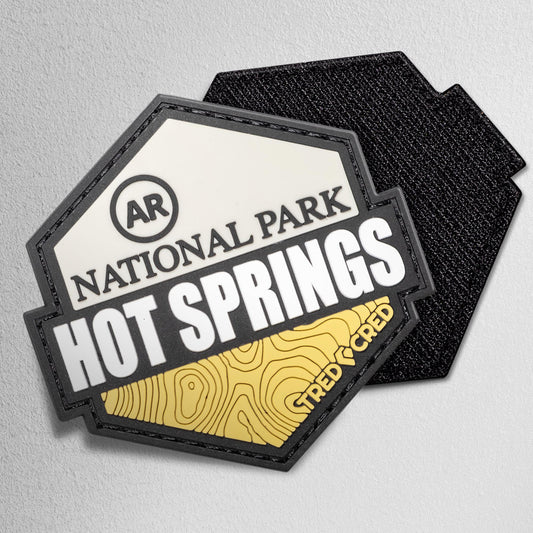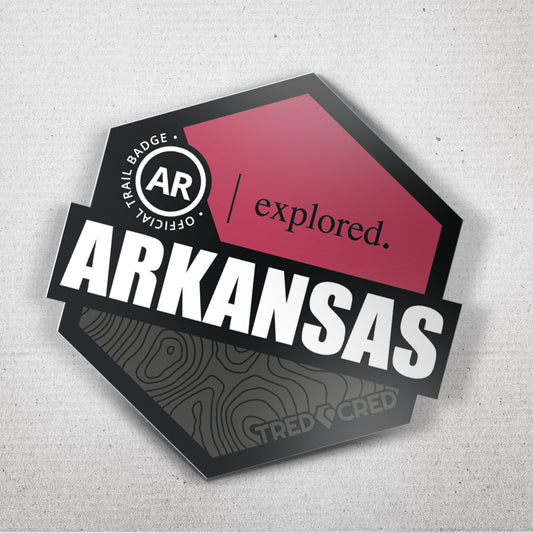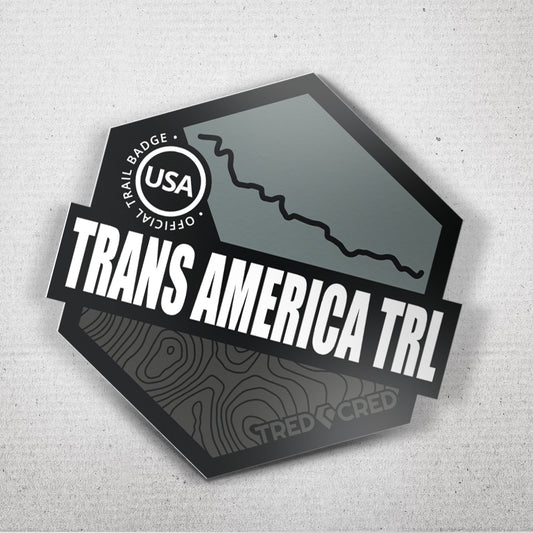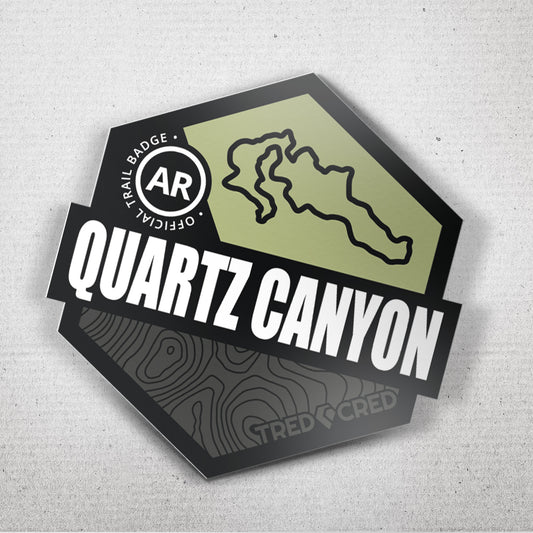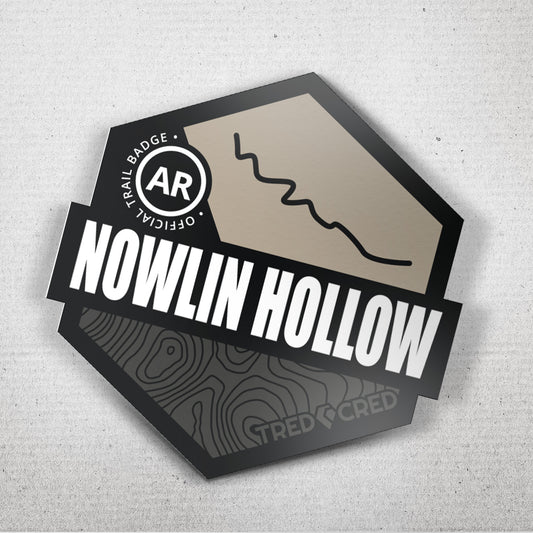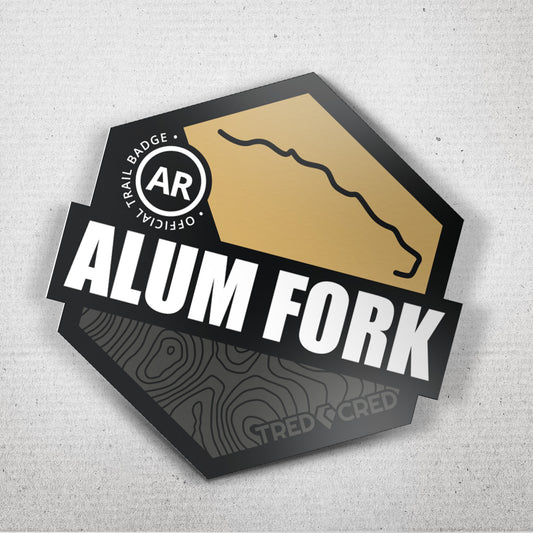Gear Up for the View: The Top 7 Scenic Off-Road Routes in the Ozark National Forest
Share
You love the dirt, but let’s be honest—sometimes the journey is about the view, not the risk of breaking a driveshaft. If your rig is built for cruising remote, high-altitude ridges and discovering hidden waterfalls, then the Ozark National Forest is calling your name. Forget the pavement princesses and the high-speed gravel crew—these authentic routes demand a solid 4x4, but reward you with the kind of epic views that truly define freedom. We’re talking about high-quality adventure without the constant threat of a trail disaster.
The Ozark National Forest in Arkansas is a sprawling canvas of hardwood forest, rugged cedar breaks, and dramatic bluffs cut by clear mountain streams. It offers the perfect blend of achievable driving and spectacular scenery, allowing you to proudly rep your rig on a relaxed overlanding trip. These trails are where you gain confidence, build skill, and load up on unforgettable memories.
We’ve scouted the best routes and compiled the Seven Scenic Sentinels—a collection of routes perfect for a day trip or an overnight basecamp. These are the trails that will make your buddies stoked to tag along. Gear up now and prepare for the best of the Arkansas highlands.
The Seven Scenic Sentinels: Ozark 4x4 Views
The beauty of these Ozark trails is their accessibility. Most of these Forest Service roads (FS Roads) are generally well-maintained, but they are far from manicured. You still need to explore with a confident hand and a capable rig. Think of these routes as the unspooling reel of scenery—slow down, enjoy the ride, and keep that camera ready.
1. White Rock Mountain - East Approach (FS 1501)
This is a classic for a reason. The drive up the east approach of White Rock Mountain is a quintessential Ozark experience, leading to one of the region’s most rewarding payoffs. It's the perfect route to start your day or end it with a spectacular show.
Scout’s Report: Sunset and Summit Gold
The trail itself is a winding, maintained gravel road that requires a steady hand and respect for elevation gain. It’s mostly moderate driving, but those final steep climbs to the summit will require you to drop into 4-High for confidence, especially if your rig is loaded with camping gear or you’ve caught some rain. I remember the first time I made the climb; I was nervous about a patch of loose shale near the top, but my durable AT tires walked right over it. It’s all about the setup.
The destination is the incredible historic White Rock Lookout Cabin and the surrounding Civilian Conservation Corps-era rock work. The views from the massive bluff line are utterly epic, stretching for miles over the vast Ozark National Forest. If you can time your arrival for sunset, you'll witness the sun bleed gold and orange across the rolling hills—a moment of true freedom you'll want to immediately rep with a Tred Cred patch.
- The Destination: Historic White Rock Lookout and panoramic vista.
- The Challenge (Mild): Maintained gravel, but includes steep climbs requiring 4-High.
- Photography Focus: Sunset and sunrise over the long-range Ozark views.
Audience Question: Is there space for my roof tent setup at the summit camping spots? Yes! The summit offers established primitive camping areas with fire rings. Space is available, but arrive early on weekends to secure the best spots with a clear view.
2. Shores Lake Road (FS 1501)
Shores Lake Road serves as the backbone for adventure in the western Ozarks. It’s not just a scenic drive; it’s a multi-use gateway route that links to various recreational areas, making it the perfect central hub for your entire journey.
Scout’s Report: The Central Hub
This route is an easy gravel drive, mostly wide enough for two vehicles to pass comfortably. Its beauty lies in its proximity to water. You'll drive near the clear, calm Shores Lake and pass several accessible stream areas, offering fun, shallow creek crossings that are perfect for a quick splash. These crossings are a great way to introduce a new driver to water navigation without the risk of deep fording.
Critically, this easy road acts as a staging area. From here, you can easily find access points to more challenging trails like the Mill Creek OHV system for when you’re ready to level up your adventure. But if the goal is relaxation and scenery, pull off near the creek and drop a line in the water. It’s the perfect blend of capability and tranquility.
- The Features: Shores Lake and accessible stream access points.
- Trail Network: Acts as a staging area connecting to more difficult OHV trails.
- The Terrain: Easy, high-quality gravel road.
Audience Question: Where are the best spots to pull off and fish near the creek? Look for the small, non-obvious pull-offs near where the road dips closest to the water. These are usually angler trails. Always check local fishing regulations!
3. Frog Bayou Trail (Road #1705)
You want water features and a great drive? Then you need to explore the Frog Bayou Trail. This route is an accessible trail known for its beautiful Frog Bayou Creek access and stunning hidden waterfalls. It offers a forgiving drive with an unforgettable reward.
Scout’s Report: Waterfall Payday
The difficulty is generally easy to medium. The road surface is a mix of gravel and hard-packed dirt. The trickiest part is navigating around the water features, as the fording depth can change quickly, especially after a heavy spring rain. You must show respect for the water’s power. A confident driver knows their vehicle’s water-fording capacity and doesn't push it. If it looks too deep, don't send it—find another route.
The payoff is the access to waterfalls, particularly the spectacular 60’ Falls (sometimes listed as one of the Hidden Falls). The trail brings you right into the heart of the ravine. The first time I hiked down to this spot, I had to stop and just stare. It was pure, untouched Ozark beauty. Pack a lunch and spend a couple of hours here. It’s the definition of an epic mid-day trail pit stop.
- The Water Feature: Frog Bayou Creek and stunning waterfall access (e.g., 60’ Falls).
- The Drive: Easy to medium, but water fording depth can be a factor.
- Pro Tip: Utilize GPS apps (Avenza/onX) for the specific waterfall access points, as they are often poorly marked on physical maps.
Audience Question: Are there good spots to safely swim or cool off during the summer? Yes, several wide, slow-moving pools along the creek offer a refreshing dip, but always check for strong currents, especially near any falls or rapids.
4. Potato Knob (FS 1510)
Potato Knob is where you get continuous high-altitude freedom without the technical crawling. This is an easy gravel road that uses strategic elevation changes to deliver miles of uninterrupted scenic views.
Scout’s Report: Along the Spine
The road is primarily easy gravel, making it ideal for overlanding rigs, but don't slack off. The steep hill climbs are where the views pay off, but they still require 4-High and a steady foot on the throttle to maintain momentum, particularly on the loose gravel. It feels like driving along the spine of the Ozarks, where the forest canopy occasionally opens up to reveal a spectacular vista.
Beyond the views, the historical element here is truly authentic. You’ll encounter the remains of old homesteads and preserved root cellars along the route. It’s a fascinating reminder of the people who were resilient enough to call this tough landscape home. Stopping to explore a stone root cellar that is over a century old adds a tangible sense of journey to your drive.
- Elevation & Views: Constant rolling hills delivering panoramic vistas.
- Unique Feature: Historical homesteads and root cellars.
- The Drive: Easy gravel, but with steep hill climbs.
Audience Question: How rough are the corrugations (washboarding) on this section? Corrugations can be bad, especially late in the summer. Airing down your tires to 20-25 PSI is mandatory for this trail—it drastically improves ride quality and prevents your gear from shaking itself apart.
5. Delaney Creek Trail (FS 1517)
Delaney Creek Trail is the scenic route that allows you to "play" a little. Located in the Boston Mountains area, it’s a great introductory trail that introduces mild off-camber sections, light mud, and shallow water crossings—a perfect stress test for your durable built rig.
Scout’s Report: The Fun Factor
This trail is your low-risk introduction to technical driving. The mild off-camber spots are just enough to get your heart rate up and teach you how your vehicle’s weight shift works. The shallow creek crossings give your tires a satisfying splash and test your seals. I took my rig here for its "first dirt bath" after a major suspension overhaul. It was the perfect spot to test the flex and get that initial, glorious layer of mud that says, "I rep the off-road life."
Caution: This trail is narrow in parts. Watch for low-hanging branches and tight squeezes. While it's scenic, it’s not designed for the widest rigs. Take it slow, enjoy the dense hardwood scenery, and be ready to accept a few “Arkansas racing stripes” (pin-striping) as a small tax for the fun.
- The Test: Introduces mild off-camber spots and shallow creek crossings.
- Aesthetics: Lush, secluded, deep-woods feeling.
- Caution: Note potential narrow spots with low-hanging branches.
Audience Question: What should be my approach speed for the mild off-camber sections on this trail? Slow is pro. Use a steady, controlled crawl speed. Don't carry momentum, as an unexpected rock or rut could throw your vehicle off balance quickly.
6. Bayou Bluff Area Road (Near Illinois Bayou)
Need a fast, rewarding hit of scenery? The Bayou Bluff Area Road is a short, highly scenic route focusing on towering bluff lines and river views near the Illinois Bayou. It’s the perfect afternoon drive.
Scout’s Report: The Quick Fix
This road is generally very easy—mostly maintained two-track or gravel, perfect for any capable 4x4. The payoff is the dramatic scenery: The river cutting through the rugged landscape and the picturesque bluffs looming overhead. It's a quick escape that leads to peaceful overnight dispersed camping spots near the water. The sound of the river against the bluffs is incredibly calming—the perfect antidote to the stress of city life.
This is a great spot to practice setting up camp quickly. Because it’s so close to civilization, it's a low-stakes way to test your roof tent, awning, or camp kitchen setup. If you can set up quickly here, you’re ready for the deep woods.
- Scenic Highlight: Dramatic bluff lines and picturesque river scenery.
- The Access: A quick, rewarding drive that leads to peaceful overnight camp spots.
- Difficulty: Very easy; mostly maintained two-track or gravel.
Audience Question: Are campfires typically allowed in this area? Always check the current Forest Service fire restrictions. They change frequently based on weather and drought conditions. A portable fire pit is always a safer, more resilient option than building a ground fire.
7. The OHT Connector Trails (FS Roads Network)
Finally, to truly feel the extent of the Ozark National Forest, you need to stitch together several Forest Service roads that connect to the famous Ozark Highlands Trail (OHT). This turns your day trip into a truly remote overlanding experience.
Scout’s Report: The Grand Loop
This isn't one road; it's a network that demands self-sufficiency. You need to link smaller FS Roads together into a grand explore loop, giving you access to true seclusion and long stretches without contact. This is the big-picture adventure. To pull this off successfully, you need the right tools: your Motor Vehicle Use Maps (MVUM) must be current, and you need a dedicated off-road GPS (like a quality satellite communicator or tablet running off-road maps). Trusting your phone for navigation here is a rookie mistake.
Your goal is to pack enough fuel, food, and water for a full two-day journey to ensure safe and continuous travel. This final step is where all your preparation pays off—you're out there, relying on your built rig and your confident skills. That’s the ultimate freedom the Ozarks can offer.
- The Purpose: Allows for extended overlanding loops and true seclusion.
- Navigation: Critical need for MVUM maps and dedicated off-road GPS tools.
- Self-Sufficiency: Must be prepared for recovery and long stretches without contact.
Audience Question: What's the average speed I should budget for an all-day run on these FS roads? Budget for an average speed of 10-15 mph. Don't rush; you’ll miss the scenery, and you’ll risk damaging your rig on unexpected potholes or washouts. Slow is pro.
Conquer the View: The Final Send-Off
The Ozark National Forest offers the perfect terrain to explore your passion without putting your rig through the wringer. These seven routes are your guaranteed path to high-reward overlanding, giving you the skills and the memories you crave. You're trading asphalt for scenic gravel, but the adventure is no less real.
The view from the top is your trophy. Grab your map, gear up, and point your nose toward those sweeping bluff views. Stop making excuses and send it on your next epic adventure.
We know the quality you demand—and we'll see the dust you earned. Rep your rig and your latest conquest with a durable Tred Cred patch for the Ozarks.


